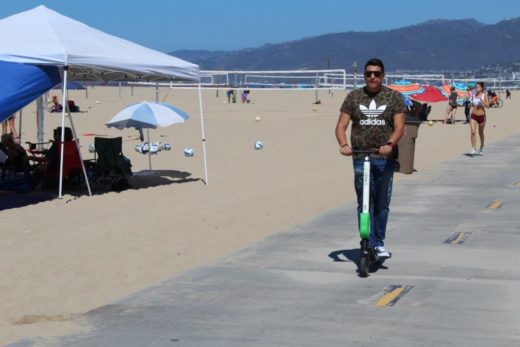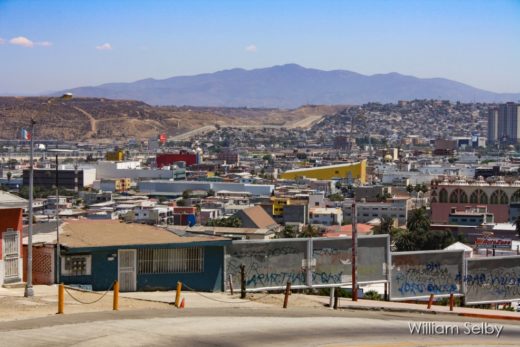Throughout this project and publication, we have recognized California’s powerful connections to the world. Are we and our landscapes truly unique or are we more alike when compared with places and cultures so distant? What lessons can we learn from these comparisons and contrasts? It is easy to note our differences with Indonesia and Greenland, where landscapes and cultures might seem unfamiliar to most native Californians. But when we venture to Mediterranean locales, dissimilarities fade and likenesses stand out until we might forget we are in a “foreign” land. Can a sort of parallel evolution of cultural landscapes emerge as different people adapt to similar environmental conditions?

Spain’s physical and human landscapes may represent ideal opportunities for such comparative analyses. Just as we took you last year to Italy, this year we examine how Spain’s Mediterranean physical and human geography could be considered California style or vice versa. These are more than fun exercises to satisfy the curious and fortify our sense of place; we are learning how natural cycles and systems fall into familiar patterns that create similar landscapes, and about the various ways people adapt to and thrive in those natural environments we call Mediterranean, while cultures separated by 6,000 miles make their imprints on the land.
We start by recognizing that Spain is north of 36 degrees latitude, while California is north of 32 degrees. The 40-degree line of latitude runs through central Spain and the northern parts of California, more proof that most of Spain is just slightly north of California, but both are well within the range of what are considered Mediterranean latitudes on the west sides of major continents. This results in cool, wet winters and long, warm summers with prolonged drought. Unlike the misguided quote, the rain in Spain does NOT fall mainly in (or on) the plain. Just as in California, Spanish mountains often provide the lift necessary so that air masses forced to rise produce more abundant orographic precipitation on mountain slopes. This precipitation falls as snow at higher elevations during winter and much of this precious water flows down into surrounding lowlands where it is exploited to support agriculture and other human activities. Sound like home?
Natural plant communities and agricultural landscapes and products (such as citrus and olives) may be even more similar. Also comparable to the Golden State, seasonal and diurnal temperatures tend to be milder in coastal areas than the extremes you will find inland. Experience a summer in Madrid to understand why there are mass migrations to the overcrowded Spanish coast each summer, particularly in August, just as inland Californians flock to cooler beaches.

Unlike California, the Iberian Peninsula (including Portugal) is surrounded by ocean water, except on its northeastern border. Spain’s north, northwest, and southeast coasts are notably dissimilar with varying temperatures resulting from very different ocean currents. And though you might be chilled into remembering a northern California beach on Spain’s north and west (along with Portugal) coasts, its Mediterranean water temperatures (along its lengthy southeast coast) are noticeably higher than on any California beach in summer. That means the Spanish Mediterranean coast experiences hotter summers than California’s coast since their summer sea breezes are not as refreshing.
And it helps us understand why summer nights along southern California’s coast have been warmer than normal during the past several years, a partial result of record warm ocean temperatures that may be another measure of climate change in our state. Good physical geographers are challenged by the potential of fascinating research projects that might measure and compare how global change impacts such distant Mediterranean places.
Human geographers will also find a wealth of discoveries and research topics to explore when we place Spain and California side by side. Whether it’s in the language, historic missions and architecture, Catholic church, or other traditions, Spain’s impacts that spread since 1769 are noticed almost everywhere in California. The similarities are far more than historical. Even today, people and institutions in both places are debating how to respond to a flood of refugees from the south that are fleeing life-threatening political and economic turmoil. Diversify or build a wall? Help the desperate immigrants or solve internal problems first? And just as Spain is struggling to create a more rewarding relationship with the European Union, so is California soul-searching its way through the political turmoil that has distinguished it from many national trends and debates in the U.S.
From within, Spain is confronted with some serious proposals to break its salad bowl cultures apart (think Basque and Catalan nationalism), while there are those in California advocating breaking it into separate states that would also be less diverse. What happens when, as some scholars have put it, these “unstoppable forces meet immovable objects”? While history, pride, tradition, and nationalism seem to be pulling Spain apart, continued growth of an already enormous California has made it more diverse and more challenging to navigate and govern as we anticipate an even larger and more powerful future state.

Then, there are the obvious differences. Contrast Spain’s many centuries of agriculture and of conquering and exploiting nature that has repeatedly transformed lives and landscapes there, to the just more than two centuries of such heavy hands on California landscapes. Native Americans were still hunting and gathering throughout California long after Roman and Moorish rule in Spain. You can look down from the plane to see how this history has left very different land use patterns in the rural and urban landscapes of Spain and California. Lonely but monumental Hearst Castle only has one thing in common with the medieval-castle-on-every-strategic-hill left behind by Spanish history: they are castles on Mediterranean hilltops. Are the other similarities and connections we try to recognize here just as insignificant?
And now compare Spain’s struggling economy (though unemployment rates dropped from above 20% to near 15% just within three years by 2018) and cultural traditions to California’s burgeoning, cutting-edge populations, economies, and cultures that keep it in the global spotlight, a state where history and tradition are often swept away for the sake of 21st Century progress and global leadership. Even with California’s wealth, as it celebrates its ranking as the world’s 5th largest economy, we can debate who is healthier and happier: when was the last time you took a siesta or sat down for two or three hours to navigate through dinner with your family?
You will find more differences within the urban landscapes of the great Mediterranean cities where the majority of people have congregated in these two places. From Barcelona to Valencia to Granada to Madrid, Spain’s cities are simply easier to navigate, especially without a car. Spaniards (as with many Europeans) have made most of their streetscapes friendlier to pedestrians and bicycles and public transit, easing traffic congestion in ways that can only be dreamed of in California cities. When you walk or ride your bike around Valencia, you can see how a beautiful city can be built to improve the quality of life instead of eroding it. You can see how traditional architecture and historic districts and plazas can be preserved on one side of town while the most modern, cutting-edge art and urban landscapes are displayed on another side of town. A sense of commitment to community and investment in shared spaces and public art is evident everywhere, as opposed to the less accessible private spaces common to California cities. It makes one wonder how Spanish urban planners have gathered the public resources necessary to create such healthy and livable urban spaces that have eluded a wealthier California.

And so in this oversimplified attempt to compare and contrast, it is assumed here that the human landscapes and cultures and people of these two Mediterranean places are growing farther apart in some ways and closer together in others, even as modern technologies attempt to shorten these distances and bridge these differences.
Still, as you view these images of Mediterranean Spain in 2018, it should be easy – for many of the reasons we have stated here – to imagine you are in California.




